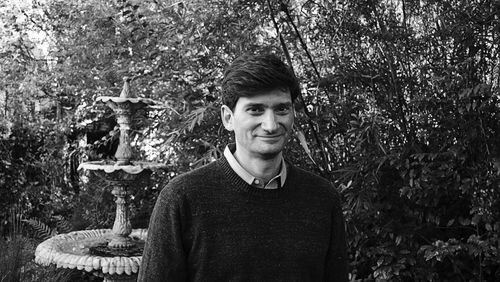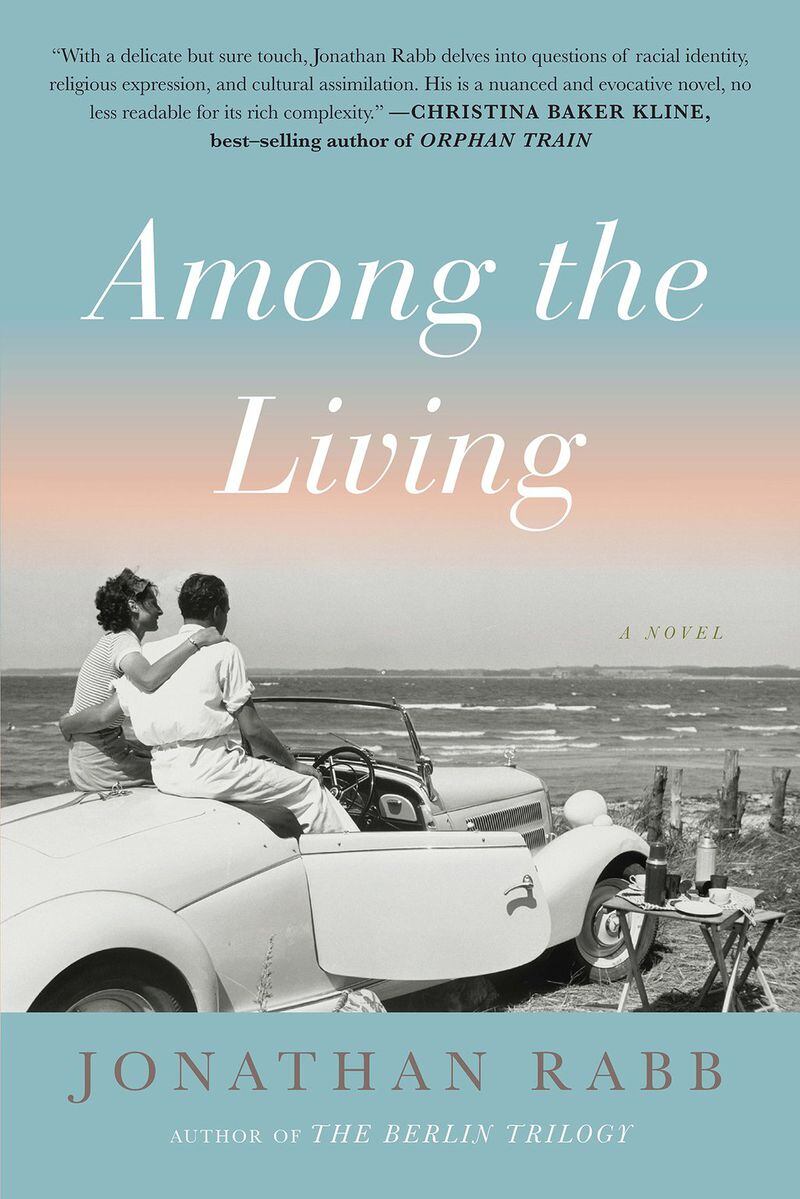Yitzhak Goldah departs a train in Savannah in late summer 1947, peering ahead “for the first glimpse of his future.” The 31-year-old Holocaust survivor finds it in his only remaining relatives, an older cousin he’s never met, Abe Jesler, and his wife, Pearl. They slide into the couple’s shiny new sedan and take the long way home, passing tightly packed buildings with names like Yachum and Yachum, Friedman Jewelers and Jesler Shoes. By the time the trio pulls up to an old sky-blue, white-trimmed Victorian with two rocking chairs and a swing on a wraparound porch, the Jeslers have convinced Yitzhak to drop his “different kind of name” for “something more familiar, something that would be more inviting.” The Jewish Czech refugee exits the car as an Ike.
Jonathan Rabb’s fictional “Among the Living” was inspired by his ancestors and the Jewish community in the city where he lives and works. The Savannah College of Art and Design writing professor, and author of the “Berlin Trilogy” historical thriller series, delves into what it was like for one man who fled the concentration camps to find himself in the American South during the waning years of the Jim Crow era. Goldah was a newspaperman in Prague, but he takes up working in Jesler’s shoe store. It’s there where he meets Eva De la Parra — a woman like something out of a fashion magazine — and the moment is recognized as love at first sight: “He had no idea of it then, not even the smallest sense, but a feeling of wonder was once again his.”
The budding mutual admiration between him and Eva is an issue for members of both families. The De la Parras are Saffee Jews (also known as Reform or temple Jews), which are “a whole different kettle a fish from Mr. Abe and Miss Pearl,” who are Conservative Jews. When Goldah and Eva are spotted sharing a park bench together in Johnson Square, one of “the talkers” tells Pearl about it before Goldah gets home, in typical Southern fashion. Pearl is childless, wildly concerned about the family’s appearance in society and appears aggressively eager to nurture Ike.
Jesler, on the other hand, assumes a genuine and hands-off father figure role — just as he does for a Jewish teenager from Yamacraw, a place that could be a nod to either the real Savannah village or the fictitious island in Pat Conroy’s “The Water Is Wide.” When the State Department summons Goldah to Atlanta for an ambiguous appointment, Jesler accompanies him. (The men stay at the Georgian Terrace, “a grand affair.”)
The subject matter of the meeting — Does Goldah know the name Malke Posner? — gives him “the sudden thought that he might never catch his breath again.” Goldah thought Malke had died after they’d been separated in the camps, yet a woman at a sanatorium in Virginia claims that name. Meanwhile, Jesler uses the trip to meet with a man who can supposedly help him with the shady import dealings his business is wrapped up in with Irish men at the Savannah docks.
Given the book’s premise, it shouldn’t be surprising that it speaks to human misery. But it is by no means merely a tale about someone adjusting to a new way of life following displacement. The author’s ability to convey deep meaning through everyday dialogue is artful, and his use of poetic abstractions to inspire personal interpretation stunning. After Goldah and Eva share their first kiss at Tybee Island, and he learns she has a son with her late husband, the normally introspective man talks about his suffering in relation to hers: “I’m sorry. I know what you must have suffered through, but –.”
Goldah and Eva get back from the beach to learn that Raymond, an African-American war hero who works for the Jeslers, has been brutally beaten with a bat after men with Ports Authority badges came around asking questions and for addresses. Raymond’s sweetheart, Mary Royal, and her father, Calvin, also work for the Jeslers. After the funnily timed beating, Calvin talks about his suffering in relation to Goldah’s: “They tried to kill you, all a you, all at once. I seen that. But here they kill us one at a time and that’s a difference.”
The story progresses with ease: Jesler’s drinking gets worse and a Morning News reporter inevitably starts poking around. Goldah reveals himself through flashbacks, his relationship with Eva deepens and he starts writing newspaper articles again. By the time Malke shows up, telling Pearl she was to be Goldah’s wife and thinking her suffering might finally be coming to an end, the reader may have forgotten about that ominous State Department meeting. But then there Malke is, talking about her suffering in relation to his: “After all, it would be so hard for you to understand.”
Goldah again feels naive, having imagined he’d know what she lived through. “He had forgotten the one truth of the Lager: that nothing is ever shared. Hunger and cold, yes, but the rest … those horrors lived inside the mind in pure isolation.” He must choose between the familiarity with Malke or the chemistry with Eva, a resolution that feels more on-key than others. Other revelations, such as who was feeding tips about corruption at the docks and how Goldah makes that go away, don’t feel fully fleshed out. Alas, those are minor plot points. The focus is the moments that count. For instance, when “a collision” between Reform and Conservative Jews on a pier forces Goldah to overcome a deeply entrenched fear.
FICTION
“Among the Living”
by Jonathan Rabb
Other Press Paperback, 320 pages, $16.95







